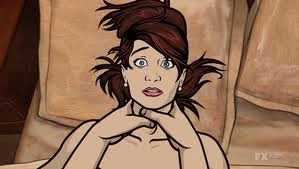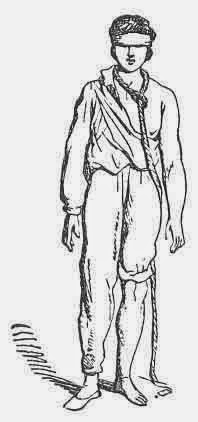 And, um, is there anything at all I can do to help minimise the side effect?
And, um, is there anything at all I can do to help minimise the side effect?
[2] The idea for this most likely came from subjects who were executed by hanging. Observers at public hangings noted male victims developed an erection, sometimes remaining after death (death erection), and occasionally ejaculated when being hanged.
Note that, however, ejaculation occurs in hanging victims after death because of disseminated muscle relaxation; this is a different mechanism from that sought by AEA (autoerotic asphyxiation) practitioners.
Practice
Various methods are used to achieve the level of oxygen depletion needed, such as a hanging, suffocation with a plastic bag over the head, self-strangulation such as with a ligature, gas or volatile solvents, chest compression, or some combination of these.
[3] Sometimes, complicated devices are used to produce the desired effects.
[4] The practice can be dangerous even if performed with care and has resulted in a significant number of accidental deaths. Uva (1995) writes “Estimates of the mortality rate range of autoerotic asphyxia between 250 to 1000 deaths per year in the United States.”
[5] Cases have also been reported in Scandinavia[6] and in Germany.
[7][8]
Accidental death
See also: Autoerotic fatality
Deaths often occur when the loss of consciousness caused by partial asphyxia leads to loss of control over the means of strangulation, resulting in continued asphyxia and death. While often asphyxiophilia is incorporated into sex with a partner, others enjoy this behaviour by themselves, making it potentially more difficult to get out of dangerous situations
[9]. Victims are often found to have rigged some sort of "rescue mechanism" that has not worked in the way they anticipated as they lost consciousness.
In some fatality cases, the body of the asphyxiophilic individual is discovered naked or with genitalia in hand, with pornographic magazines nearby, with dildos or other sex toys present, or with evidence of having orgasmed prior to death.
[7] Bodies found at the scene of an accidental death often show evidence of other paraphilic activities,[10] such as fetishistic cross-dressing and masochism.
[3] However, in many cases families of these victims may disturb these sites by "sanitizing" them, removing evidence of such paraphilic activities.[11]
The great majority of known erotic asphyxial deaths are male; among all known cases in Ontario and Alberta from 1974 to 1987, only one out of 117 cases was female.[3]
Some individual cases of women with erotic asphyxia have been reported.[12][13][14][15]
The mean age of accidental death is mid-20s,[3][16], but deaths have been reported in adolescents[17][18][19] and in men in their 70s.[7][16]
Autoerotic asphyxiation has at times been incorrectly diagnosed as murder and especially so when a partner is present. Some hospitals have teaching units specifically designed to educate doctors in the correct diagnosis of the condition.[citation needed]
Lawyers and insurance companies have brought cases to the attention of clinicians because some life insurance claims are payable in the event of accidental death, but not suicide.[20][21][22]
Famous cases
Newspaper photo taken shortly after Sada Abe's arrest in Tokyo on May 20, 1936.
David Carradine, actor, Lumpini police found him curled up inside a closet with one end of a shoelace tied around his penis and the other end fastened around his neck. [23]
Frantisek Kotzwara, composer, died from erotic asphyxiation in 1791, which is probably the first recorded case.
Sada Abe killed her lover, Kichizo Ishida, through erotic asphyxiation in 1936, proceeding to cut off his testicles and carry them in her handbag for a number of days. The case caused a sensation in 1930s Japan and has remained one of the most famous Japanese murder cases of all time.
Albert Dekker, stage and screen actor, was found in 1968 with his body graffitized and a noose around his neck in his bathroom.
Vaughn Bodé, artist, died from this cause in 1975.
Stephen Milligan, a British Conservative MP for Eastleigh, died from autoerotic asphyxiation combined with self-bondage in 1994.[24]
Kevin Gilbert, a songwriter, musician, composer, producer and collaborator, died of apparent autoerotic asphyxiation in 1996.[25]
Michael Hutchence, lead singer of INXS, may have died from autoerotic asphyxiation in 1997, although suicide was the official cause of death.[26][dubious – discuss]
Kristian Etchells, British National Front party member, in 2005.[27]
On March 28, 2007, The New York Times had a front-page story on a teenager who had suffered a heart attack and spent three days in a coma after hanging himself for a "rush".[28], in what appeared to be an instance of a choking game.
In Herceg v. Hustler, Diane Herceg sued Hustler magazine for the death of her 14-year-old son, Troy D., who had experimented with autoerotic asphyxia after reading about it in that publication. [29]
CHAPTER VI
THE CABLE TOW
I
The cowboy who "lassoes" a pony and the Laplander who throws a noose about the neck of a reindeer are making use of a device for fettering and controlling animals that was discovered by man long before the beginnings of history. Because of the many uses to which he put the rope, or noose, and because it was a natural thing for his imagination to play about simple every day implements and experiences man early made a symbol of the noose. It may be that the emblematic use of the rope could be traced to yet other sources, but that given is reasonable enough and may stand in our mind for a suggestion of the manner in which symbols and emblems often come into existence. The candidate in a number of the Ancient Mysteries was led into the place of initiation at the end of a rope; Brahmins and Dervishes continue to make a similar use of it at the present time. In every such case the noose, rope, or cable tow has been used to signify control, obedience, and direction. (See "Ars Quatuor Coronatorum," Vol. I, p. 264. Hereafter, in referring to these familiar volumes, which contain the published transactions of a great Lodge of Masonic Research of London, England, I shall use the well-known initials, A.Q.C.)
This symbol, as every candidate has learned, is used in Masonic ceremonies. When, by whom, and in what manner it was introduced there is still an open question,
though our scholars have searched far and wide to discover. Its use may have been borrowed from earlier fraternities; or it may have been inherited from the Operative Lodges who may have used it for the purely practical purpose of maintaining bodily control of the candidate. The latter supposition receives a certain amount of support from the fact that English lodges still give the cable tow a non-symbolical function, and then in the First Degree only; and there are echoes of such a meaning in the First Degree as practised here in the United States.
II
Mackey defines a cable tow as "a rope or line for drawing or leading" and suggests that it may have been derived from the German "Kabeltau," which has that significance. Mackey adds that "the word is purely Masonic" but this is not quite true because it is found in the Standard Dictionary of 1913 and there defined as "a rope or line for drawing or leading; in Freemasonry, symbolising in the Second and Third Degrees the covenant by which Masons are bound." This last-named point is inaccurate, as the reader will have instantly noted, because the cable tow is used in the First as well as the other two degrees; this is one more example of the woful ignorance of Freemasonry displayed by profane editors of encyclopædias and dictionaries and reminds one how careful a student should be to make sure of the authenticity of his sources of information. Albert Pike traced the word back to the Hebrew "Khabel," which meant variously "a rope attached to an anchor" and "to bind as with a pledge." J. T. Lawrence finds its origin in two languages: "cabel," a Dutch word "signifying a great rope, which, being fastened to the anchor, holds
the ship fast when she rides"; "tow" he believes to be a Saxon word "which means to hale or draw and is applied, nautically, to draw a barge or ship along the water."
III
What does this symbol mean? Many have contended, Albert Pike among them, that the cable tow is nothing more than a device for the bodily control of the candidate; but this interpretation is not borne out by the Second and Third Degrees in both of which it carries an undeniably symbolical meaning. Others see in it an emblem of the natural untaught man's bondage to ignorance and lust, which bondage it is the mission of Masonry to remove. Of such an opinion is Arthur Edward Waite, who, seeing in the rope a suggestion of the cord that binds the unborn babe, or the babe newly born, to its mother's body, finds in the symbol a representation of the gross earthly ties that hold unregenerated men to their appetites and passions. In view of the fact that the symbolism of rebirth runs through the Ritual this interpretation is not at all far-fetched. Paton finds in the cable tow a "simple and natural tie which unites the Fraternity": Lawrence sees it as "the Mystic Tie binding the initiate to God, to the Order, and to Righteousness; a tie which both binds and draws, and which holds a man fast, lest he drift like a ship at sea." Churchward, who loves to go far afield, traces the symbol back to ancient Egypt, where he believed himself to have discovered so many Masonic origins, in whose Mysteries, some of them, the candidate wore a chain about the neck "to signify their belief in God and their dependence on Him." (See his "Signs and Symbols of Primordial Man.") Others have believed that the cable tow is the symbol of all bad obediences—obedience to lust, to passion,
selfishness, worldliness, etc., and consequently must be removed from the emancipated finder of the Light: others have found in it the opposite symbol of all good obediences—the ties that bind a man to his fellows, to laws, to duty, and to ideals. The variety of these interpretations tends to confuse one, especially a beginner in symbolism, who is tempted to believe that where so many meanings are found there cannot be any meaning at all; it must be remembered that a symbol by its very nature says many things at once, things often the most diverse, a function which is not the least of its many advantages. Almost all great and simple words—love, patriotism, friendship, immortality, God, etc.,—are similarly prolific of meanings, and so are symbols or symbolical actions in every-day use, such as a flag, the wave of a hand, or the tipping of one's hat.
IV
To my own mind the candidate is as a child struggling for release from narrow environments and external restraints in order to enter into the larger life of liberty and self-direction. The cable tow about his neck symbolises all those external checks and restraints, such as conventionality, fear of the world, fear of the adverse opinions or displeasure of men, and of the control of teachers and parents on which a child naturally depends but which must be thrown off when one has reached full responsibility as a man "of mature age." The removal of the noose symbolises the attainment of inward light, judgment and the power of self-direction—in other words, real manhood, which has its centre and support in an inward power that is stronger than any pressure from without. Dr. Buck whom I have already quoted (I am not in agreement with him in his interpretation of
[paragraph continues]Masonry as a whole) has given us in words of admirable simplicity a noble exposition of the true significance of this symbol:
"He [the candidate] is restrained now [after the removal of the cable tow] by the voluntary obligations taken, all of which indicate the necessity of constant vigilance and self-control. In place of the former command—'thou shalt not'—comes the voluntary pledge—'I will.' The result is to replace outer constraint by inward restraint, without annulling or altering a single moral precept. The slave who formerly obeyed a Master through fear, now voluntarily serves a Master through love. The difference is that between a bondman and a freeman, and the result to the candidate can hardly be put in words when it is once realised." (New Age, Vol. vii, page 159.)
The homely practical truth and usefulness of all this interpretation may be made instantly discernible by a simple example. In human society in general, law, written or unwritten, is the cable tow that holds fast every man. The good man cannot escape from it any more than a bad man, and he who walks about his own yard, a free and respectable citizen, is quite as much held fast by the law as he who sits sullenly in a prison cell, denied the right of seeing the sun or of walking upon the grass. But while these two men are equally held by law, the manner in which law holds them is as different as day is from night; for whereas the prisoner is held by it against his own will, the free man obeys it of his own choice. The hope of the world depends upon those who "have the law in their inward parts" and keep it because they love order and security. Men and women who must be forced to keep order are a source of social unhappiness; it is impossible to have a policeman at every man's
elbow. A wise and good citizen is one who inwardly understands why law is necessary and what law is, and gives it a voluntary obedience, so that nobody needs to stand by to force compulsion. Moreover, such a man has learned that freedom is nothing other than the inward and voluntary obedience, glad obedience, to wise and just laws. People of a low order must be held fast by external force; in proportion as men and women become advanced, external force becomes increasingly unnecessary, so that in a truly civilised state, order rests on the inward character of men. The savage has the rope about his neck; the civilised man has it in his heart. It is not a question of tie or no tie; but of what kind of a tie it is that holds a man to his fellows, to the state, and to his duty.
V
As to the meaning of the expression "length of my cable tow" it is somewhat difficult to speak, owing to the great variety of interpretations that have been offered, a few of the more typical examples of which may be here given. Pike sees in it "the scope and intent and spirit of one's pledge." Brother Rev. F. de P. Castello, writing on "The Geometry of Freemasonry" ("Author's Lodge Transactions," Vol. i, page 286), says, "The cable's length has always been understood to be one of 720 feet, which is twice 360, the measure of the circle"; making one circle to stand for the spiritual in man, and the other for the material, he believes the "length of my cable tow" to mean that, "I will go as far in assisting my brethren as my moral principles and my material condition will permit." In Mackey's Encyclopædia we may read: "The old writers define the length of a cable tow, which they sometimes called a 'cable's length,' to be three miles for an
[paragraph conEntered Apprentice. But the expression is really symbolic, and, as defined by the Baltimore Convention in 1842 [a notable Masonic gathering], means the scope of a man's reasonable ability." With the Baltimore Convention one may very well agree.





















No comments:
Post a Comment